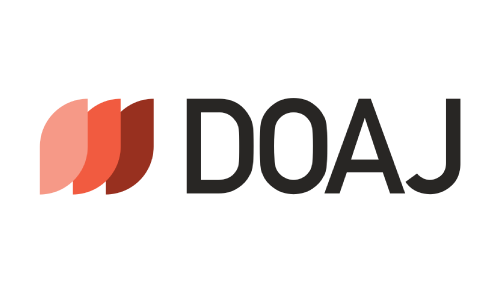A Study of Current situation, Difficulties, and Advantages of implementing BIM in the Construction Sector in Northern Iraq
DOI:
https://doi.org/10.21271/ZJPAS.32.2.10Keywords:
BIM, difficulties, advantages, current situation, RIIAbstract
Building Information Modeling (BIM) as an effective Technique of construction projects management has been adopted by the AEC (Architectural, Engineering, and Construction) industry. BIM has substantial benefits over the whole construction lifecycle. In spite of the importance of applying BIM in construction projects, It looks there is fewer study presented to rank the difficulties factors of implementing BIM , also there is less study conducted to show the advantages of using BIM in the construction sector in Northern Iraq. The major objective of this study is to investigate the current situation of applying BIM in the construction sector in Northern Iraq, examine the difficulties of implementing BIM and identify the advantages of implement BIM in the construction industry. A questionnaire was prepared and distributed to 276 engineers in three Governorates (Erbil, Kirkuk, and Sulaymaniyah) in both sectors (private and public). The collected data analyzed using the relative importance index (RII) and mean to rank the difficulties and advantages of implement BIM in Northern Iraq. The analysis results revealed that the most significant difficulties factors in adopting BIM in Northern Iraq are lack of education and syllabus in college regarding the sophisticated package, e.g., ArchiCAD and Revit, there is no training and tutoring for BIM applications in government departments and lack of government supporting and encouraging implementing BIM. The results also revealed the most significant advantages of using BIM are reduce risks in the design stage, improve building design and models, and improve the quality of the building.
References
ABUBAKAR, M., IBRAHIM, Y., KADO, D. & BALA, K. Contractors’ perception of the factors affecting building information modelling (BIM) adoption in the Nigerian construction industry. International Conference on Computing in Civil and Building Engineering, 2014. 23-25.
ARAYICI, Y., EGBU, C. & COATES, S. 2012. Building information modelling (BIM) implementation and remote construction projects: issues, challenges, and critiques. Journal of Information Technology in Construction, 17, 75-92.
ARKKELIN, D. 2014. Using SPSS to understand research and data analysis.
ARMAH, N. N. O. 2016. Assessing the benefits and barriers of the use of building information modeling (BIM) in the Ghanaian Building Construction Industry.
AZHAR, S. 2011. Building information modeling (BIM): Trends, benefits, risks, and challenges for the AEC industry. Leadership and management in engineering, 11, 241-252.
AZHAR, S., KHALFAN, M. & MAQSOOD, T. 2012. Building information modelling (BIM): now and beyond. Construction Economics and Building, 12, 15-28.
BELLIARD, R. & SHANTALLE, L. 2016. Implementation of BIM in the Municipal Plan Review Process.
BERKMAN, E. T. & REISE, S. P. 2011. A conceptual guide to statistics using SPSS, Sage.
BLAXTER, L. 2010. How to research, McGraw-Hill Education (UK).
BOTH, P. V. 2012. Potentials and barriers for implementing BIM in the German AEC market: results of a current market analysis.
CALITZ, M. 2009. Chapter 5 pilot study. Retrieved from uir. unisa. ac. za/bitstream/handle/10500/1648/06chapter5. pd.
CHAN, C. T. 2014. Barriers of implementing BIM in construction industry from the designers’ perspective: A Hong Kong experience. Journal of System and Management Sciences, 4, 24-40.
DELAVAR, M. 2017. BIM Assisted Design Process Automation for Pre-Engineered Buildings (PEB).
EADIE, R., ODEYINKA, H., BROWNE, M., MCKEOWN, C. & YOHANIS, M. 2014. Building information modelling adoption: an analysis of the barriers to implementation. Journal of Engineering and Architecture, 2, 77-101.
GAJBHIYE, A. D. 2011. Empirical Study of Macrobim and Conceptual Estimation. Texas A & M University.
GERGES, M., AUSTIN, S., MAYOUF, M., AHIAKWO, O., JAEGER, M., SAAD, A. & GOHARY, T.-E. 2017. An investigation into the implementation of Building Information Modeling in the Middle East. Journal of Information Technology in Construction (ITcon), 22, 1-15.
HAMADA, H., HARON, A., ZAKIRIA, Z. & HUMADA, A. 2016. Benefits and Barriers of BIM Adoption in the Iraqi Construction Firms. International Journal of Innovative Research in Advanced Engineering, 3, 76-84.
HAMADA, H. M., HARON, A., ZAKIRIA, Z. & HUMADA, A. M. Factor Affecting of BIM Technique in the Construction Firms in Iraq. MATEC Web of Conferences, 2017. EDP Sciences, 03003.
HARON, N. A., SOH, R., ANA, R. P. Z. & HARUN, A. N. 2017. Implementation of Building Information Modelling (BIM) in Malaysia: A Review. Pertanika Journal of Science & Technology, 25.
HATEM, W. A., ABD, A. M. & ABBAS, N. N. 2018a. Barriers of Adoption Building Information Modeling (BIM) in Construction Projects of Iraq. Engineering Journal, 22, 59-81.
HATEM, W. A., ABD, A. M. & ABBAS, N. N. 2018b. Testing a Measurement Model of BIM Potential Benefits in Iraqi Construction Projects. Civil Engineering Journal, 3, 1349-1365.
HINTON, P., BROWNLOW, C., MCMURRAY, I. & COZENS, B. 2004. Using SPSS to analyse questionnaires: Reliability. SPSS explained, 356-366.
HOLT, G. D. 2014. Asking questions, analysing answers: relative importance revisited. Construction Innovation, 14, 2-16.
KEKANA, T., AIGBAVBOA, C. & THWALA, W. Building information modelling (BIM): Barriers in adoption and implementation strategies in the South Africa construction industry. International Conference on Emerging Trends in Computer and Image Processing, Pattaya, Thailand, 2014.
KOTHARI, C. R. 2004. Research methodology: Methods and techniques, New Age International.
KUMAR, J. V. & MUKHERJEE, M. 2009. Scope of building information modeling (BIM) in India. Journal of Engineering Science and Technology Review, 2, 165-169.
LI, H., NG, S. T., SKITMORE, M., ZHANG, X. & JIN, Z. Barriers to building information modelling in the Chinese construction industry. Proceedings of the Institution of Civil Engineers-Municipal Engineer, 2017. ICE Publishing, 105-115.
LIU, S., XIE, B., TIVENDAL, L. & LIU, C. 2015. Critical barriers to BIM implementation in the AEC industry. International Journal of Marketing Studies, 7, 162-171.
MATARNEH, R. & HAMED, S. 2017. Barriers to the Adoption of Building Information Modeling in the Jordanian Building Industry. Open Journal of Civil Engineering, 7, 325.
MEMON, A. H., RAHMAN, I. A., MEMON, I. & AZMAN, N. I. A. 2014. BIM in Malaysian construction industry: status, advantages, barriers and strategies to enhance the implementation level. Research Journal of Applied Sciences, Engineering and Technology, 8, 606-614.
NEUMAN, W. L. 2011. Social science methods: Quantitative and qualitative approaches. Boston, MA, Allyn & Bacon.
OLUWATAYO, J. A. 2012. Validity and reliability issues in educational research. Journal of Educational and Social Research, 2, 391-400.
SALEH, M. A. D. 2015. Barriers and Driving Factors for Implementing Building Information Modelling (BIM) in Libya. Eastern Mediterranean University (EMU)-Doğu Akdeniz Üniversitesi (DAÜ).
SEED, L. 2015. The Dynamics of BIM Adoption: A Mixed Methods Study of BIM as an Innovation within the United Kingdom Construction Industry. University of Huddersfield.
SREELAKSHMI, S., KANTILAL, B. S. & ROSHAN, M. 2017. A Study on the Barriers to the Implementation of Building Information Modeling. International Journal of Civil Engineering and Technology, 8, 42–50.
SUN, C., JIANG, S., SKIBNIEWSKI, M. J., MAN, Q. & SHEN, L. 2017. A literature review of the factors limiting the application of BIM in the construction industry. Technological and Economic Development of Economy, 23, 764-779.
TAHERDOOST, H. 2016. Validity and reliability of the research instrument; how to test the validation of a questionnaire/survey in a research.
TALEBI, S. Exploring advantages and challenges of adaptation and implementation of BIM in project life cycle. 2nd BIM International Conference on Challenges to Overcome, 2014. BIMForum Portugal.
WATSON, G. 2004. The legacy of Ishikawa. Quality Progress, 37, 54.
YAN, H. & DEMIAN, P. 2008. Benefits and barriers of building information modelling.
ZAHRIZAN, Z., ALI, N. M., HARON, A. T., MARSHALL-PONTING, A. & HAMID, Z. A. 2014. Exploring the barriers and driving factors in implementing building information modelling (BIM) in the Malaysian construction industry: A preliminary study. Journal Institution of Engineers Malaysia, 75, 1-10.
Downloads
Published
How to Cite
Issue
Section
License
Copyright (c) 2020 Nazik Imad Saber, Khalil Ismail Wali

This work is licensed under a Creative Commons Attribution 4.0 International License.














